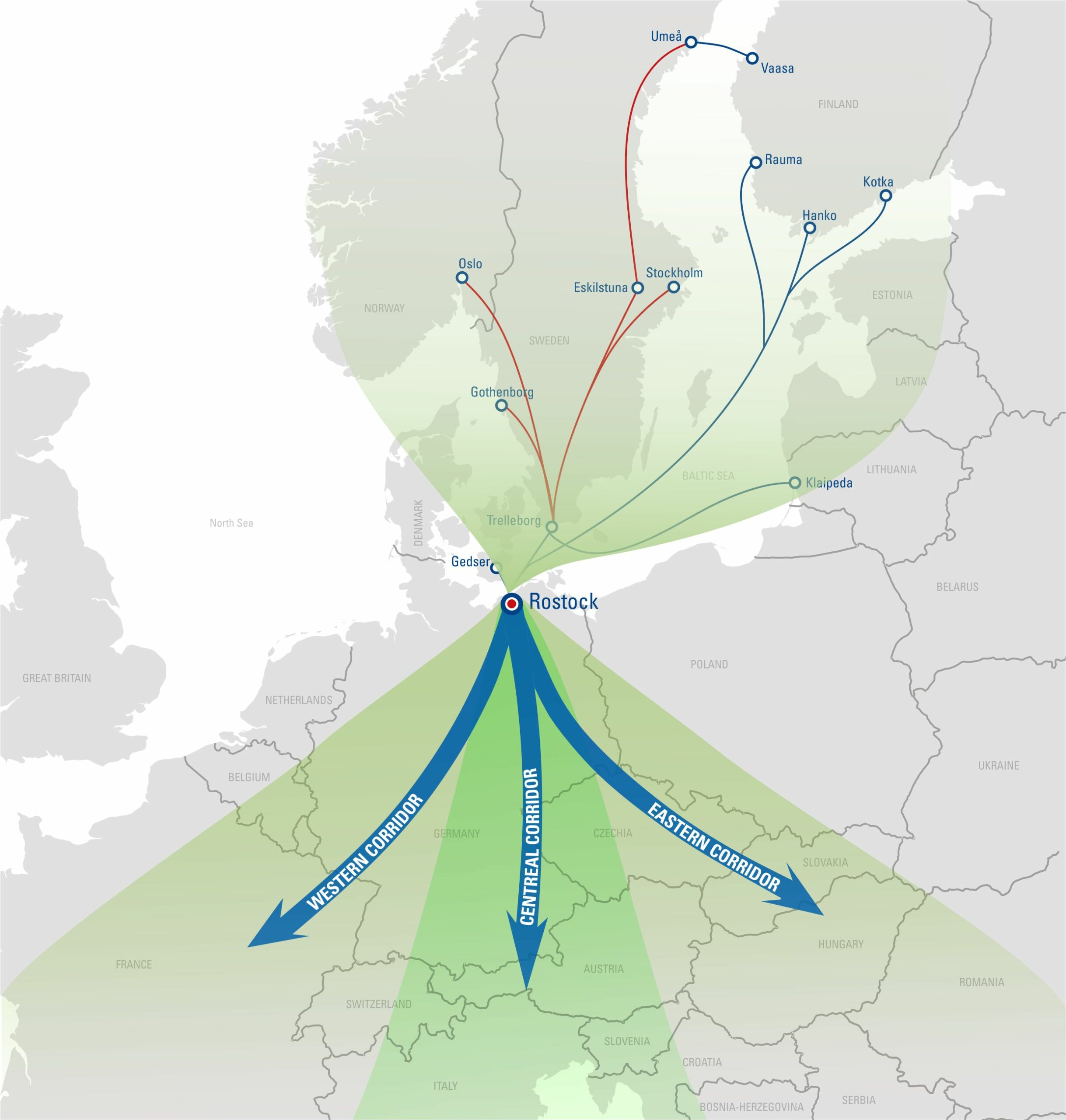Rostock - hub for European green logistics chains
- The shortest and fastest way to Scandinavia and Finland
- Regularly growing pan-European multimodal transports for unaccompanied loading units for years now
- Connection to the Silk Road Initiative
The Rostock seaport sees itself as a hub for pan-European green logistics chains between Central Europe and the northern European countries of Denmark, Sweden, Norway, and Finland and the Baltic States. The main focus of traffic since the establishment of combined transport at the Rostock location in the mid-1990s has been the natural hinterland of Rostock on the central corridor, with the five new federal states, including Bavaria in Germany, via Austria the Tyrol region to northern Italy. The from the point of view of the port of Rostock continuously growing corridors in Western and Eastern Europe are coming more into focus, especially in today’s increasing demand for climate and environmentally friendly modes of transport.

Seaport Rostock
- the only deep-water and largest port on the German Baltic coast
- very short distance between sunbathing area and lake
- 11 km of quays with 47 berths
- 750 ha of port areas with reserves for settlements
Marshalling yard in Rostock
The Rostock overseas port was conceived more than 60 years ago as a rail port and developed with the infrastructure for the rail transport of bulk and general cargo. The marshalling yard in the harbor apron has track facilities with a total length of 180 kilometers. These are connected to the renewed railroad line to Berlin. Liquid goods such as biodiesel, bulk goods such as cement and grain, as well as general cargo such as semi-trailers, containers and swap bodies and, as of 2022, new passenger car transports are regularly transported to and from the rail port of Rostock by rail. The main segment in rail freight transport is combined transport, which accounts for around half of train throughput.
The railhead and the tracks in the port are managed by DB Netz, the rail infrastructure provider, and offered free of discrimination.
Terminals
All types of unaccompanied loading units in intermodal traffic that reach the Port of Rostock by rail can be handled in the terminals arranged for this purpose, with proximity to the ferry and RoRo berths. This enables a short port throughput time and thus offers an ideal prerequisite for optimizing the logistics chain.
